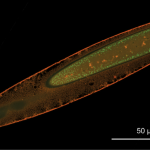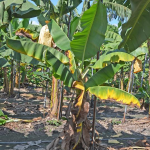With the rise of electric vehicles and consumer electronics, reused lithium-ion batteries are seen as a promising solution for sustainability and circular economy. But there’s a major problem—how do we group old batteries together when we don’t know their history?
A groundbreaking study led by Wang et al. (2024) proposes an innovative deep learning-based sorting algorithm that classifies reused batteries based on their long-term performance potential, without needing prior usage data.

The Problem with Battery Reuse
Used batteries—even those of the same model—differ widely in:
- State of health (SoH)
- Aging rates
- Cycle history
- Internal resistance and capacity
Traditional sorting relies on basic capacity tests or voltage thresholds. But these approaches fail to predict long-term performance, leading to inconsistencies in reused battery packs.
The Deep Sorting Solution
The researchers developed a deep learning architecture that:
- Takes initial short-term charging data (only 10 cycles)
- Learns underlying features of aging and degradation
- Sorts batteries into consistency groups based on predicted long-term behavior (e.g., over 100+ cycles)
- Works with no prior knowledge of battery usage or manufacturer specs
Why It Works:
The model combines:
- Time-series convolutional networks (TCN)
- Attention mechanisms for feature weighting
- Clustering algorithms to form stable, long-lasting battery groups
This method significantly improves group consistency, which is critical for safe and efficient second-life applications like:
- Energy storage systems (ESS)
- Off-grid power solutions
- EV fleet repurposing
Key Innovations
- Label-free classification: No need for labeled aging data
- Adaptable to unknown conditions: Handles mixed battery batches
- High scalability: Suitable for large-scale recycling facilities
- Predictive power: Sorts based on future behavior, not just present metrics
The model enables more consistent performance, less failure, and longer lifespan in reused battery systems.
Implications for the Circular Battery Economy
This technology is a game-changer for:
- Battery recyclers: Who need fast, accurate ways to reuse cells
- Energy companies: Seeking low-cost storage solutions
- EV manufacturers: Managing battery end-of-life sustainably
- Climate goals: Promoting green energy without new resource extraction
It also accelerates the second-life battery market, which is estimated to reach $7 billion by 2030.
Conclusion
Instead of guessing how old batteries will perform, this deep learning model lets us sort them intelligently and reliably—unlocking longer life, better performance, and more sustainable reuse.
As the battery industry shifts toward circularity, AI-driven sorting may become the gold standard for ensuring quality and safety in second-life energy systems.
Reference
Wang, S., Gao, F., & Tian, H. (2025). Deep sorting of reused batteries for enabling long-term consistency grouping with unknown prior conditions. Cell Reports Physical Science. DOI: 10.1016/j.xcrp.2025.102657







